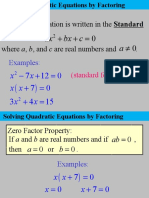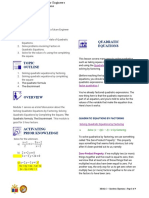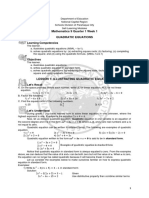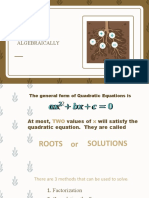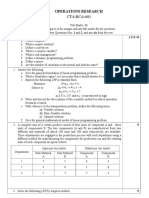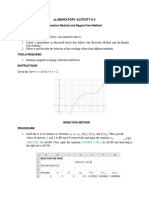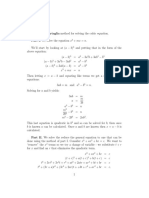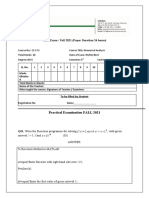0% found this document useful (0 votes)
9 views17 pagesFactoring - Solving Polynomial Equations
The document explains how to solve quadratic equations by factoring, detailing the standard form of a quadratic equation and the zero-factor property. It provides step-by-step strategies for solving these equations, including examples and solution sets. Additionally, it highlights the relationship between the degree of a polynomial and the number of solutions.
Uploaded by
marwan meroCopyright
© © All Rights Reserved
We take content rights seriously. If you suspect this is your content, claim it here.
Available Formats
Download as PPT, PDF, TXT or read online on Scribd
0% found this document useful (0 votes)
9 views17 pagesFactoring - Solving Polynomial Equations
The document explains how to solve quadratic equations by factoring, detailing the standard form of a quadratic equation and the zero-factor property. It provides step-by-step strategies for solving these equations, including examples and solution sets. Additionally, it highlights the relationship between the degree of a polynomial and the number of solutions.
Uploaded by
marwan meroCopyright
© © All Rights Reserved
We take content rights seriously. If you suspect this is your content, claim it here.
Available Formats
Download as PPT, PDF, TXT or read online on Scribd
/ 17







